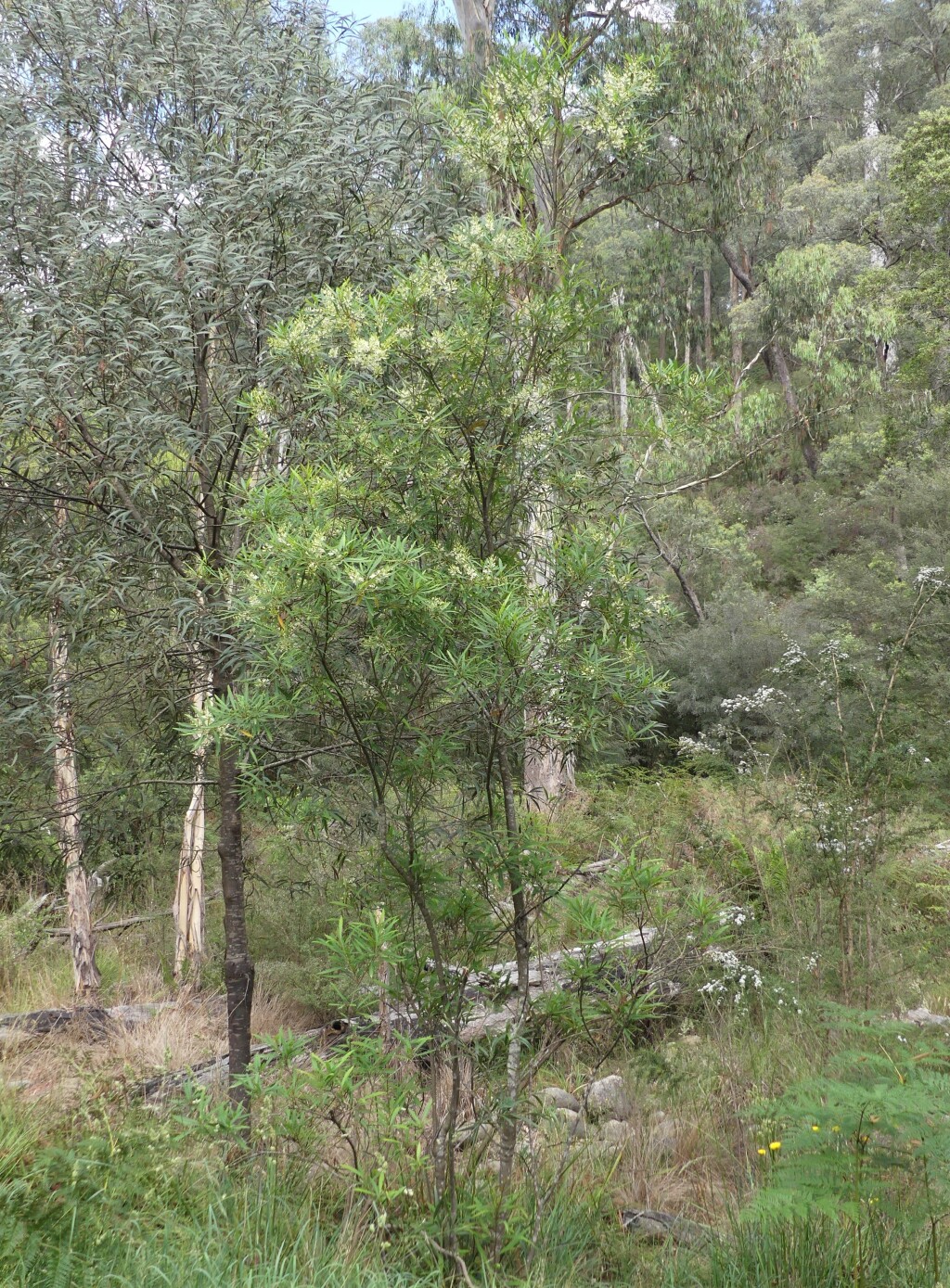Lomatia myricoides
(C.F.Gaertn.) Domin River LomatiaShrub or small tree to c. 5 m high; buds and young branches rusty-hairy. Leaves sessile to shortly petiolate, linear, narrowly oblong or lanceolate, 5–20 cm long, 5–20 mm wide, dull green, lower surface paler, venation inconspicuous, surfaces virtually glabrous; apex acute; margins entire or coarsely toothed. Inflorescence an axillary raceme or panicle, 5–10 cm long, mostly shorter than leaves; pedicels c. 7 mm long. Tepals 8–10 mm long, white or cream, virtually glabrous. Follicle 20–30 mm long, leathery, blackish; seeds c. 10 per follicle, to c. 17 mm long including wing. Flowers Dec.–Feb
VRiv, GipP, CVU, NIS, EGL, EGU, HSF, HNF, MonT, HFE, VAlp. Also NSW, ACT. Widespread and locally common in eastern Victoria, usually in montane riparian habitats, occasionally entering subalpine woodlands (e.g. on the Nunniong Plateau).
A variable species with the leaves sometimes approaching those of L. fraseri in size and shape, but distinguishable by their virtually glabrous underside.
Jeanes, J.A. (1996). Proteaceae. In: Walsh, N.G.; Entwisle, T.J., Flora of Victoria Vol. 3, Dicotyledons Winteraceae to Myrtaceae, pp. 830–887. Inkata Press, Melbourne.
 Spinning
Spinning

